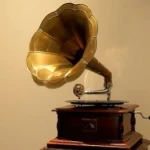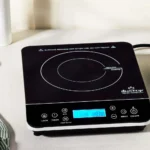
Typewriters, once a cornerstone of communication and creativity, have a rich history that spans over a century. From their innovative designs to their cultural significance, these mechanical devices have left an indelible mark on the way we write and express ourselves. Despite the rise of digital technology, typewriters continue to captivate a dedicated community of enthusiasts and artists who appreciate their unique charm and tactile experience. Here are some intriguing facts about typewriters that highlight their evolution and enduring appeal.
The first practical typewriter was invented by Christopher Latham Sholes in 1868. Sholes, an American inventor and newspaper editor, developed the typewriter as a means to improve the efficiency of writing. His design featured a keyboard, a carriage, and a ribbon for ink, which allowed for the simultaneous pressing of keys to produce letters on paper. This invention marked a significant advancement in communication technology, paving the way for future innovations in writing and typing.
The Sholes and Glidden typewriter, introduced in 1873, was the first commercially successful model. This typewriter, also known as the “Remington No. 1,” was manufactured by E. Remington and Sons. It featured the QWERTY keyboard layout, which was designed to minimize the likelihood of jamming by placing frequently used letters apart. The Sholes and Glidden model gained popularity due to its effectiveness and was the first typewriter to be mass-produced, leading to widespread use in offices and homes.
The QWERTY keyboard layout was designed to reduce jamming in early typewriters by placing commonly used letters far apart. The layout was created by Sholes to address the mechanical issues faced by early typewriters, where adjacent keys would often jam when pressed in quick succession. By strategically positioning the keys, the QWERTY layout allowed for smoother typing and increased efficiency. This keyboard design has persisted into modern computer keyboards, showcasing its lasting influence on typing technology.
The first typewriter to use the QWERTY layout was the Sholes and Glidden model. This typewriter, which debuted in 1873, was revolutionary for its time. It not only introduced the QWERTY layout but also featured a distinctive design that included a wooden case and a metal frame. The Sholes and Glidden model was pivotal in popularizing typewriting, making it a standard tool in offices and changing the way people communicated in writing.
The term “typewriter” was first used in 1873. The word “typewriter” was coined to describe the machine that could produce written text mechanically. This term became widely adopted as typewriters gained popularity, and it distinguished the device from traditional writing tools like pens and pencils. The emergence of the term reflected the cultural shift towards mechanized writing and the growing reliance on technology in communication.
Typewriters were originally referred to as “writing machines.” Before the term “typewriter” became commonplace, these devices were often called writing machines, highlighting their function as tools that facilitated written communication. The change in terminology signified the evolution of the device and its acceptance in society. As typewriters became more refined and accessible, the term “typewriter” took precedence, becoming synonymous with the mechanical writing process.
The first electric typewriter was introduced by IBM in 1935. IBM’s electric typewriter represented a significant technological advancement, as it replaced the manual effort of striking keys with an electrically powered mechanism. This innovation allowed for faster typing speeds and reduced physical strain on the user. The electric typewriter featured a variety of improvements, including automatic return and the ability to type in different fonts, making it an attractive option for offices and writers.
The IBM Selectric, released in 1961, revolutionized typing with its unique “ball” typing element. The Selectric typewriter introduced a new technology that replaced traditional typebars with a rotating spherical typing element, or “typeball.” This allowed for faster and quieter typing, as well as the ability to easily change fonts by swapping out the typeball. The Selectric’s design became iconic and remained a staple in offices for decades, influencing the development of later word processing technologies.
The typewriter was a significant tool for women entering the workforce in the late 19th and early 20th centuries. As typewriters became more prevalent in offices, they provided new job opportunities for women, who were often employed as typists and secretaries. This shift marked a change in societal norms, as women gained financial independence and entered the workforce in greater numbers. The typewriter became a symbol of women’s empowerment, allowing them to take on roles that were previously dominated by men.
The last mass-produced typewriter was manufactured by Brother Industries in 2010. This marked the end of an era for typewriters, as they had been largely replaced by computers and word processing software. Brother Industries, a Japanese company, produced the final model in response to a dwindling market. Despite the decline in production, typewriters still hold a nostalgic appeal for many writers and enthusiasts, who appreciate their mechanical simplicity and tactile experience.
Typewriters were used extensively in offices until the rise of personal computers in the 1980s. The typewriter became a staple in business environments, facilitating the efficient production of documents, letters, and reports. As offices adopted typewriters, they also established typing pools, where skilled typists would produce written materials for various departments. However, with the introduction of personal computers in the 1980s, which offered advanced features like editing and formatting capabilities, the reliance on typewriters began to decline significantly, leading to their gradual obsolescence in professional settings.
The typewriter’s design has influenced the layout of modern computer keyboards. The QWERTY layout, established by early typewriters, was carried over to computer keyboards, creating a familiar interface for users transitioning from mechanical to digital writing. The arrangement of keys, including the placement of letters, numbers, and function keys, has remained largely consistent with typewriter designs. This continuity reflects the lasting impact of typewriters on typing technology, as users have adapted to similar layouts across different devices, ensuring a smoother learning curve for new technologies.
The first portable typewriter was created by the Sholes and Glidden model, which was later refined by other manufacturers. While the Sholes and Glidden model was primarily a stationary typewriter, its design laid the groundwork for the development of portable versions. The first truly portable typewriter was introduced by the Blickensderfer Manufacturing Company in the late 1890s. This innovation allowed writers to take their typewriters on the go, catering to traveling journalists and authors. The portability of typewriters expanded their usability, making them more accessible to a broader audience.
In 1904, the first typewriter with a visible writing feature was introduced by the Blickensderfer Manufacturing Company. This model allowed users to see what they were typing as they typed, a significant advancement over previous designs that obscured the writing process. The visible writing feature improved accuracy and reduced errors, as typists could monitor their work in real-time. This innovation paved the way for subsequent developments in typewriter technology, enhancing the user experience and making typewriting more efficient.
The Royal Typewriter Company was founded in 1904 and became one of the leading typewriter manufacturers. Royal quickly gained a reputation for producing high-quality typewriters known for their durability and performance. Their models, such as the Royal Quiet De Luxe, became popular among writers and professionals alike. The company played a vital role in the evolution of typewriters, introducing features like the touch control mechanism, which allowed users to adjust the force required to strike the keys, enhancing typing comfort and efficiency.
The Underwood typewriter, introduced in 1896, was one of the first to feature a front-strike mechanism. This design allowed the typebars to strike the paper from the front, which enabled users to see their work as they typed. The Underwood model became highly popular due to its innovative design and ease of use. Its front-strike mechanism was a significant advancement in typewriter technology, leading to improved visibility and accuracy, and contributed to the Underwood brand’s dominance in the typewriter market during the early 20th century.
The “typewriter’s” first patent was granted to Henry Mill in 1714, though it was never developed into a working model. Mill’s invention was an early attempt at creating a machine that could produce written text mechanically, but it lacked the practical design and functionality of later typewriters. Despite its failure to materialize, Mill’s patent is often recognized as a precursor to the development of typewriters, illustrating the long-standing interest in automating the writing process long before the successful models emerged in the 19th century.
The typewriter was used in the first-ever novel typed entirely on a typewriter, “The Adventures of Tom Sawyer” by Mark Twain. Twain typed the manuscript for this classic novel in 1876, making it the first book to be produced using a typewriter. This marked a significant moment in literary history, as it showcased the typewriter’s potential as a legitimate tool for authors. Twain’s use of the typewriter not only highlighted its efficiency but also contributed to the device’s growing acceptance among writers and publishers.
The typewriter’s popularity led to the establishment of typing schools in the late 19th century. As typewriters became more common in offices, the demand for skilled typists increased. Typing schools emerged to teach individuals how to type efficiently and accurately, often employing standardized methods and techniques. These institutions played a crucial role in training a workforce capable of handling the demands of modern office environments, and many students who attended these schools went on to secure typing jobs in various industries.
The first typewriter with a built-in correction feature was the IBM Selectric II, introduced in 1973. The IBM Selectric II marked a significant advancement in typewriter technology by incorporating a correction tape mechanism that allowed users to easily correct mistakes without having to retype entire pages. This innovation greatly improved efficiency and accuracy in typing, as typists could quickly fix errors on the fly. The Selectric II also featured a variety of font options, allowing for greater customization in document presentation. This model solidified the Selectric’s reputation as a leading choice for businesses and professionals, reflecting the ongoing evolution of typewriters to meet the needs of modern users.
The first typewriter with a built-in correction feature was the IBM Selectric II, introduced in 1973. The IBM Selectric II revolutionized typing with its innovative correction feature, allowing users to easily fix mistakes without the need for correction fluid or tape. This model was part of the Selectric series, which first debuted in 1961 and was notable for its unique “ball” typing mechanism, replacing the traditional typebars. The Selectric II allowed for faster and more efficient typing, catering to the needs of professional typists and offices. The introduction of this correction feature marked a significant advancement in typewriter technology, reflecting the growing demands for accuracy and efficiency in the workplace.
Typewriters have been used in various forms of art, including typewriter art and poetry. The typewriter has transcended its original purpose as a writing tool to become a medium for artistic expression. Artists and poets have utilized typewriters to create unique works that emphasize the mechanical nature of the machine. Typewriter art often involves using the typewriter to create visual compositions, where letters and symbols are arranged to form images. This practice gained popularity in the 20th century, with artists such as Bruce Nauman and others exploring the typewriter’s potential as a creative tool. Additionally, poets have embraced the typewriter for its tactile experience and the rhythm it provides, often producing works that celebrate the act of writing itself.
The typewriter’s design has been the subject of many design exhibitions and retrospectives. The aesthetic and functional design of typewriters has garnered significant attention in the fields of industrial design and history. Numerous exhibitions have showcased the evolution of typewriter design, highlighting iconic models and their contributions to communication technology. These retrospectives often explore the interplay between form and function, examining how design innovations improved usability and influenced the way people interacted with text. Typewriters, with their diverse styles ranging from ornate to minimalist, reflect the cultural and technological changes of their time, making them a fascinating subject for design enthusiasts and historians alike.
The last typewriter factory in the U.S. closed in 2011, marking the end of an era. The closure of the last typewriter factory in the United States in 2011 signified the decline of an iconic piece of technology that had shaped the landscape of writing and communication for over a century. This factory, located in New Jersey, produced typewriters that were once staples in offices and homes across the country. The end of production was a result of the rapid technological advancements in personal computers and digital devices, which rendered typewriters largely obsolete. This closure not only marked the end of an era for typewriter manufacturing but also highlighted the broader shift in how society engages with written communication in the digital age.
Typewriters are still used by some writers and enthusiasts who appreciate their tactile feedback and simplicity. Despite the prevalence of computers and digital devices, a niche community of writers and enthusiasts continues to cherish typewriters for their unique tactile feedback and simplicity. Many find the act of typing on a typewriter to be a more immersive and focused experience, free from the distractions of modern technology. The rhythmic sound of keys striking the paper and the physicality of the machine can inspire creativity and provide a sense of nostalgia. Additionally, some writers argue that the limitations of typewriters—such as the inability to easily edit text—encourage a more deliberate and thoughtful writing process, making them a preferred choice for those seeking a deeper connection to their craft.
Frequently Asked Questions About Typewriters
General Questions
1. What is a typewriter? A typewriter is a mechanical device used to produce printed text. It consists of a keyboard, a platen (a roller that holds paper), and a typebar mechanism. When a key is pressed, a typebar with the corresponding letter or symbol strikes the ribbon, which then imprints the character onto the paper.
2. When were typewriters invented? The first practical typewriter was invented in the 1860s by Christopher Sholes, James Densmore, and Carlos Glidden. However, earlier attempts at typewriters existed as early as the 1500s.
3. How do typewriters work? Typewriters work by using a lever system to move a typebar, which contains a metal die with the desired character. When a key is pressed, the lever activates the typebar, causing it to strike the ribbon and then the paper, leaving an impression of the character.
4. Are typewriters still used today? While typewriters are not as common as they once were, they are still used by some people, particularly collectors, enthusiasts, and those who prefer the tactile experience of typing on a mechanical device.
Types of Typewriters
1. What are the different types of typewriters? There are several types of typewriters, including:
- Manual typewriters: These require the user to manually press down on the typebar to print each character.
- Electric typewriters: These use an electric motor to assist in the typing process, making it easier to type quickly and for long periods.
- Portable typewriters: These are smaller and lighter than full-size typewriters, making them easier to carry around.
- Manual portable typewriters: These are portable typewriters that require manual operation.
- Electric portable typewriters: These are portable typewriters that use an electric motor.
- IBM Selectric typewriters: These use a golf ball-shaped typing element that rotates to position the desired character.
Typewriter Maintenance and Repair
1. How do I clean a typewriter? To clean a typewriter, first remove the ribbon cartridge. Then, use a soft brush or cloth to gently remove dirt and debris from the keys, platen, and other parts of the typewriter. Avoid using harsh chemicals or solvents.
2. How do I change a typewriter ribbon? To change a typewriter ribbon, first remove the old ribbon cartridge. Then, insert the new ribbon cartridge into the typewriter according to the manufacturer’s instructions.
3. Where can I find typewriter repair services? Typewriter repair services can be found at some office supply stores, antique shops, and online. You can also search for typewriter repair specialists in your area.
Typewriter Collecting
1. What makes a typewriter valuable? The value of a typewriter depends on several factors, including its age, condition, rarity, and brand. Typewriters made by well-known manufacturers, such as Remington Rand, Underwood, and Royal, are generally more valuable than those made by lesser-known brands.
2. How do I restore a typewriter? Restoring a typewriter can be a time-consuming and challenging process. It often involves cleaning, lubricating, and repairing various parts of the typewriter. If you are not experienced with typewriter repair, it is best to consult with a professional.
3. Where can I find typewriter collectors? There are many online forums and communities dedicated to typewriter collecting. You can also find typewriter collectors at antique shows and flea markets.









